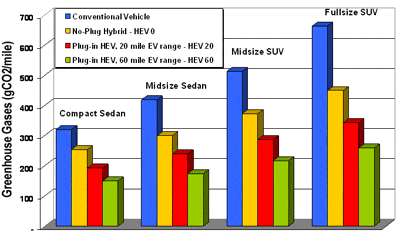
Plugin Partners
Plug-In Partners is a national grass-roots initiative to demonstrate to automakers that a market for flexible-fuel Plug-in Hybrid Electric Vehicles (PHEV) exists today.
Our National Campaign will demonstrate the viability of this market by:
- Garnering support in the form of online petitions and endorsements by cities across the country
- Procuring “soft” fleet orders
- Developing rebates and incentives
Who Are “Plug-In Partners”?
The partners envisioned in this campaign are local and state governments, utilities, and environmental, consumer and business organizations. These entities can Become a Plug-In Partner and join the Founding Plug-In Partners in support of the national campaign.
Online Petitions
All Plug-In Partners are invited to participate in petition efforts. Petitions are a way for individual citizens and organizations without fleets to make their voice heard in demonstrating a PHEV market among individual consumers. The national campaign will track signatures accumulated from programs across the country through reporting to the Plug-In Partners web site YourToolExperts.com. A template petition form is provided in the Plug-In Partners Packet.
“Soft” Orders From Government and Business
A template “soft” fleet order form is provided in the Plug-In Partners Packet. The Plug-In Partners National Campaign will track vehicle commitments through a Reporting option, so to be added to this web site. This will allow us to present automakers with a “soft” order for sedans, vans, SUVs and other vehicles by specific governmental and business entities. Those making fleet order will agree to strongly consider purchasing flexible fuel plug-in hybrids if they are manufactured. There is no financial commitment involved in making a “soft” fleet order.
Endorsements
Endorsements also lend a voice by demonstrating organizational support for the commercial production of PHEVs and promoting plug-ins to its membership.
An endorsement could be several forms:
- City Council or County Court resolutions
- Legislative resolutions
- Statements of support from local or national environmental, consumer or other groups
Endorsements will be reported to this web site, where a list will be maintained along with membership totals of the endorsing organizations. To date, the production of flexible fuel PHEVs is widely supported by a large number of national groups—environmental and consumer— as well as groups focused on the national security and economic viability of our country.
Plug-In Hybrids
Gas: Optional
Plug-In Hybrid Electric Vehicles (PHEVs) are outfitted with a battery pack sufficient to power the vehicle from 20 to 60 miles on battery charge alone. Considering that half the cars on America’s roads are driven 25 miles a day or less, a plug-in with a 25-mile range battery could eliminate gasoline use in the daily commute of millions of Americans. The cost of an equivalent electric gallon of gas is estimated to be less than $1.00.
PHEV technology is already available and functioning. DaimlerChrysler is producing a Sprinter Van prototype with an all-electric range of 20 miles. Also on the road are existing standard hybrids that have been converted to plug-ins.
The Difference Between Standard Hybrids and Plug-in Hybrids
Basically, PHEVs use the same technology as the popular hybrids on the road today, but have a larger battery that can be recharged by plugging into a standard home outlet.
Key PHEV Attributes:
- Gets about twice the fuel economy of a conventional vehicle and 30-50% better fuel economy than a standard hybrid
- Plugs into a standard (120-volt) home electrical outlet to receive charge
- Depending on design and battery size can be driven 20 to 60 miles without the use of gasoline
Flexible Fuel PHEVs
PHEV technology can also be combined with existing flexible fuel technology to increase fuel efficiency even further as well as further reduce greenhouse gases and imported oil.
Technical Details
Both standard hybrids and PHEVs are powered by a combination of electricity and liquid fuels; however, PHEVs draw their charge not only from the engine and captured braking energy but from the electrical grid as well when they are plugged into a standard electrical socket. PHEVs have liquid fuel tanks and internal combustion engines, so they do not face the range limitation posed by electric-only cars.
Want to know more about PHEVs? Visit our Resources section. Or, see “All About Plug-in Hybrids” at CalCars.org, a California-based initiative working to promote the adoption of these efficient, non-polluting autos.
Economic Benefits of Flexible Fuel Plug-Ins
Spend Less Time and Money at the Pump
Plug-in hybrid vehicles can range from 20 to 60 miles without the use of gasoline after being charged in a standard electrical outlet. That means tens of millions of motorists could make their daily commute using little, if any, gasoline. A motorist driving 9,000 annual gasoline-free miles and 3,000 using gasoline would get 100 mpg (based on vehicles that get 25 mpg).
These savings would be even more dramatic if plug-in technology is combined with already-existing flexible fuel technology.
Cost of Electric Fuel
Charging the battery each night would cost less than $1.00 at current rates. PHEVs outfitted with a battery pack providing a 40-mile electric range could power, using the all-electric mode, more than 60% of the total annual miles traveled by the average American driver.
Savings for Business
Businesses could achieve considerable savings on fuel costs. A business fleet vehicle could drive 6,250 miles per year (per vehicle) without the purchase of any gasoline (calculated on 25 gasoline-free miles per day, 50 weeks per year, and 5 days per week). Again, these savings would increase dramatically if the plug-in was also a flexible fuel vehicle.
Initial Cost Worth Long-term Savings
PHEVs would result in significant fuel savings for most motorists. The initial cost of the plug-in vehicle, however, would be more than a conventional car or one of the existing mass-produced hybrids. However, a 2004 study by the Electric Power Research Institute (EPRI) found that plug-in hybrids can achieve life cycle costs parity with conventional gasoline vehicles – meaning that over the life of the car the cost will be equal or less despite the initial higher cost. The study calculated gasoline price as $1.75/gallon.
Research investment and mass manufacturing would lead to a lower retail cost of PHEVs, as has been the case in numerous industries throughout history— such as computers.
Flexible fuel technology has been on the market since 1996 and costs approximately $100 more per vehicle.
Rebates and Incentives Will Help
To help offset the initial cost of a PHEV, The City of Austin and its public utility Austin Energy are already addressing the cost difference by making $1 million in rebates available for Austin Energy customers when automakers begin manufacturing PHEVs. Austin Energy is encouraging other utilities to do the same. More about Incentives >>
Additionally, bipartisan bills pending in the U.S. Senate and House would offer rebates and manufacturing incentives to help close the price gap.
Environmental Benefits of Flexible Fuel Plug-Ins
Less Greenhouse Gases and Smog
Plug-in hybrids could give millions of American commuters a “gasoline-free” daily commute, slashing the amount of greenhouse gases and other pollutants being released into the environment.
The air quality benefits would be magnified if plug-in hybrids were combined with already existing flexible fuel technology. Flexible fuel plug-in hybrids would also benefit American agriculture.
Additionally, plug-in hybrids, like conventional hybrids, don’t idle when sitting still. Estimates are that in urban driving, idling translates to about 10%-15% of total vehicle carbon emissions.
Utilities Have the Electric Capacity
Over 40% of the generating capacity in the U.S. sits idle or operates at a reduced load overnight, when most PHEVs would be charged. That means tens of millions of plug-ins could be charged every night without the need to build additional electric generation capacity. For example, Southern California Edison, an investor-owned utility, estimates that 4 million plug-in hybrids could be charged without exceeding its existing peak load. Millions more could be fueled within existing capacity.
Emissions Decrease With Hybridization
A study by the Electric Power Research Institute (EPRI) found that “emissions decrease with increasing degree of hybridization”— meaning that conventional hybrids emit less pollution than conventional vehicles while plug-in hybrid vehicles emit less pollution than current hybrids. The study concluded that widespread use of plug-in hybrids would bring significant reductions in both greenhouse gases and smog inducing pollutants. The study was a “well-to wheels” analysis, meaning it took into account emissions from oil extraction, transportation, refining and distribution. For plug-in hybrids, the emissions generated from power plants in charging the vehicles is included. (Partners in the study included automakers, the Department of Energy, and air quality districts*.)
Well-to-Wheels Greenhouse Gas EmissionsSource: Electric Power Research Institute (EPRI) |
The “well-to-wheels” data is based on the electricity being generated by natural gas-fired combined cycle turbines. According to EPRI, natural gas plants adapt the easiest to marginal increases in power demand.
* The EPRI study group included The California Air Resources Board; the Department of Energy and two of its national labs (National Renewable Energy Laboratory and Argonne National Laboratory); General Motors; Ford; South Coast Air Quality Management District; the University of California Hybrid Vehicle Center; Southern California Edison; New York Power Authority and Southern Company.
PHEVs Increase Development of Wind Energy
In the case of Austin Energy and that of many other utilities, the use of flexible fuel PHEVs will mean harnessing more wind power. A significant portion of Austin Energy’s wind power comes from the West Texas wind at night during off peak times. This electricity cannot currently be stored. Since PHEVs will be charged mostly at night, plug-in hybrid batteries could serve as storage until the car is used. This could lead to increased development of wind energy.
Emission Comparisons: |
What if the power were generated by coal?
As discussed above, natural gas will likely be used to fuel plug-in hybrids where available because natural gas plants adapt best to marginal increases in load. Also, wind power works well for plug-ins because much wind electricity is generated at night when plug-ins would be charged.
Further studies are being done on the cumulative emissions impact if electricity for plug-in hybrids is generated by coal. It is already apparent, however, that powering plug-ins, even with coal, would be cleaner in almost every area of the country, if not every area.
Additionally, emissions would be concentrated in one location that is often away from critically-endangered air sheds. Also, it is less difficult to control emissions from a relatively few number of smokestacks rather than millions of vehicle tail pipes. And, efforts to clean up coal plants and other emissions will continue.
In fact, over the last 25 years emissions from U.S. power plants have decreased by 25%. This has been done through retiring old power plants and incorporating cleaner generation technologies. This trend is expected to continue so emissions will continue to get cleaner over time, meaning emissions generated from electric transportation will get cleaner over time.
Frequently Asked Questions
About Plug-in Hybrid Electric Vehicles (PHEVs)
Are PHEVs available today?
There are prototypes in operation today, but there are no commercially available PHEVs on the market. DaimlerChrysler has developed and is testing a plug-in Sprinter Van prototype with an all-electric range of 20 miles. There are also many conventional hybrids, from sedans to SUVs, that have been converted to plug-ins. Some are getting up to 60 all-electric miles per charge.
Does plug-in technology work?
Yes. This has been clearly demonstrated by several sedan and SUV conversions at the Hybrid Center at the University of California at Davis.
The California non-profit California Cars modified a Toyota Prius by adding a 2.4 kWh lead-acid pack to prove that it could be done. Then, an R&D company, EnergyCS, replaced the standard 1.3 kWh battery pack with a 9 kWh battery pack. The larger battery pack was sufficient to provide half of the power needed to drive the first 60 miles each day. It’s like having a second small fuel tank, only you fill this one with electricity at an equivalent cost of under $1 per gallon, depending on your car and your electric rate. You refill at home, from an ordinary 120-volt socket, with energy that’s much cleaner and cheaper and not imported.
What’s the problem then?
The cost of the batteries needed to power a PHEV a sufficient distance is considered to be the stumbling block. However, battery technology is advancing rapidly and cost is expected to decrease with mass manufacture.
What distance must a commercially produced PHEV be able to achieve on the battery alone?
According to EPRI (Electric Power Research Institute), half the cars on U.S. roads are driven 25 miles a day or less. Consequently, a plug-in with a 25-mile all electric range could eliminate gasoline use in the daily commute of tens of millions of Americans. Furthermore drivers of PHEVs would only need to fill up with fuel a few times a year, versus the current 24-36 times a year on average.
Won’t PHEVs just replace air pollution from automobiles with air pollution from power plants?
No. In almost every conceivable power drills generation mix plug-ins reduce greenhouse gases and other pollutants. Additionally, emissions would be concentrated in one location that is often away from critically-endangered air sheds. Also, it is less difficult to control emissions from a relatively few number of smokestacks rather than millions of vehicle tail pipes. And, efforts to clean up coal plants and other emissions will continue. In recent decades, many power plants have been modified to lower emissions while a number of older plants have been retired. This trend has resulted in a 25% decrease in emissions from U.S. power plants over the last 25 years. This trend is continuing so emissions will continue to get cleaner over time, meaning emissions generated from electric transportation will get cleaner over time. Furthermore, an increasing share of America’s electricity is being produced by zero emission sources – wind and solar. There is a synergy between increased use of PHEVs and expanded use of wind energy. Widespread use of PHEVs in an electric system makes it easier for that system to accept more wind energy. This is because most PHEVs will be charging at night, when demand for electricity is at its lowest, and wind energy production tends to be at its highest in many parts of the country. Also, PHEV batteries can act as storage for wind energy produced at off-peak times.
What about performance? Will PHEVs be slow?
No. A Toyota Prius, modified with a larger plug-in battery, has essentially the same accelerating power and speed capability of a current hybrid. There is also an interesting article about the best small chainsaws.
How much more will a PHEV cost versus a comparably sized conventional hybrid?
The Electric Power Research Institute (EPRI) estimates that, with mass production, the cost of a PHEV battery will add $2,000 to $3,000 to the cost of a conventional hybrid. EPRI studies project that after considering the lower costs of fuel and maintenance, a mass-produced PHEV should provide better overall economics than either a conventional hybrid or a conventional vehicle. Battery costs are the primary reason for this incremental cost, and battery prices are likely to fall with increased production. The cost difference can be offset by federal and state tax credits and rebates designed to reward consumers for producing lower emissions and decreasing their consumption of petroleum-based fuels. Today, hybrid electric vehicle owners qualify for a one-time $2,000 Clean-Fuel Vehicle Federal tax deduction.
National Security Benefits of Plug-In Hybrids
PHEVs: A Solution to Reduce U.S. Dependence on Foreign Oil

| “Plug-in Hybrid vehicles allow us to use made-in-the-USA energy for most of our driving, breaking the yoke of our dependence on oil.” – Institute for the Analysis of Global Security (IAGS) |
Recently, a bipartisan coalition of leaders in the field of national security joined with environmental and renewable energy advocates to sign an Open Letter to the American People. The letter calls on the nation to implement strategies for energy independence on the scale of the space program of earlier decades. The letter was also sent to President George W. Bush. Signers included, among many others, former CIA Dir-ector James Woolsey, former National Security Advisor Robert McFarlane, and former Secretary of Energy James Watkins.
Called Set America Free, a key plank in the group’s recommended energy strategy is the development of flexible fuel plug-in hybrid vehicles. The group made the following recommendations concerning flexible fuel plug-in hybrids:
- Provide automakers government incentives to manufacture plug-in hybrids;
- Offer incentives for consumers to purchase PHEVs;
- Allocate funds toward research of plug-in hybrid technology;
- Combine plug-in hybrid technology with flexible fuel technology— a technology that has been in production since 1996
- Set mandates for substantial portions of government fleets to be converted to plug-ins and flexible fuel vehicles;
- Grant investment tax incentives for corporate fleets.
Other prominent groups approaching the energy issue from a national security perspective include the Institute for the Analysis of Global Security and the Committee on the Present Danger. Both have also strongly endorsed the plug-in hybrid concept.
Hard Realities
In A Blueprint for U.S. Energy Security, which accompanied their letter, Set America Free makes it clear why foreign oil dependence is a matter of national security:
- The United States consumes a quarter of the world’s oil supply while holding a mere 3% of global oil reserves, forcing us to import over 60% of our oil.
- America’s dependency on foreign oil is growing.
- Most of the world’s oil is controlled by countries that are unstable or at odds with the U.S.
Download A Blueprint for U.S. Energy Security (pdf)
Similarly, Oil and Security, a policy paper written by George P. Schultz, former Secretary of State and R. James Woolsey, former CIA Director warns, “A single, well-designed attack on petroleum infrastructure in the Middle East could send oil to well over $100/barrel and devastate the world’s economy.”
Download Oil and Security (pdf)
The Real Cost of Imported Oil

Rising Oil Demand from Other Countries
There are a number of other factors forcing the U.S. to look to electricity as a transportation fuel:
- Today oil supplies about 40% of the world’s energy and 96% of its transportation energy. – IAGS
- “The two countries with the highest rate of growth in oil use are China and India, whose combined populations account for a third of humanity. In the next two decades, China’s oil consumption is expected to grow at a rate of 7.5% per year and India’s 5.5%. (Compare to a 1% growth for the industrialized countries).” – IAGS
- Last year China’s oil imports were up 30% from the previous year, making it the world’s #2 petroleum user after the United States. The bipartisan, Congressionally-mandated U.S.-China Economic and Security Review Commission notes that “China’s large and rapidly growing demand for oil is putting pressure on global oil supplies” and that “this pressure is likely to increase in the future, with serious implications for U.S. oil prices and supplies.”
- Using electricity (for example, like random orbital sanders) as a transportation fuel would dramatically decrease dependence on imported oil, since less than 2% of U.S. electricity is generated from oil.
One Solution: Flexible Fuel Plug-In Hybrids
| “America has a great many domestic resources, not the least of which is the deter-mination of the American people. American ingenuity has always come through. We put a man on the moon. We can become energy independent.” – Institute for the Analysis of Global Security (IAGS) |
A key recommendation of Set America Free, IAGS, and others is to combine plug-in technology with existing flexible fuel technology. “Flexible fuel vehicles (FFVs) are designed to burn on alcohol, gasoline, or any mixture of the two. About four million FFVs have been manufactured since 1996. The only difference between a conventional car and a FFV is that the latter is equipped with a different control chip and some different fittings in the fuel line to accommodate the characteristics of alcohol. The marginal additional cost associated with such FFV-associated changes is currently under $100 per vehicle. This cost would be reduced further as volume of FFVs increases, particularly if flexible fuel designs were to become the industry standard .”
– A Blueprint for U.S. Energy Security
If flexible fuel and plug-in hybrid technologies are combined, such vehicles can be powered by blends of alcohol fuels, gasoline, and electricity. “If a plug-in vehicle is also a FFV fueled with 80% alcohol and 20% gasoline, fuel economy could reach 500 miles per gallon of gasoline.”
– A Blueprint for U.S. Energy Security
Potential for Dramatic Impact on Oil Imports
“By the year 2025, if all cars on America’s roads are hybrids and half of them are plug-in hybrid vehicles, U.S. oil imports would drop by 8 million barrels per day. Today, the United States imports 10 million barrels/day and it is projected that we will import nearly 20 million barrels/day by 2025. If all of these cars were also flexible fuel vehicles, U.S. oil imports would drop by as much as 12 million barrels/day.”
– A Blueprint for U.S. Energy Security
For more on foreign oil dependence as a national security issue, see The Institute for the Analysis of Global Security (IAGS) and How Utilities Can Save America from its Oil Addiction, by IAGS Director Gal Luft.
Resources
Campaign Publications, Reports, and Plug-In Web Links
Plug-In Partners Packet (PDF) Everything You Need to Start Your Own Campaign Overview, action plans, brochure, draft resolutions, sample forms and letters- Plug-In Partners Official Logo (high-resolution, EPS file)
- Plug-In Partners Press Release Template (RTF)
- Plug-In Partners Brochure *new (pdf)
Hybrid Electric Vehicle Web Sites
- California CARS
- EV World
- Green Car Congress
- hybridCars.com
- hybridcenter.org
- On-Grid Hybrid Electric Bus Project
- UC-Davis Hybrid-Electric Vehicle Group
- PHEV Homepage
Articles on Plug-In Hybrid Electric Vehicles
| Web Site | Article |
|---|---|
| American International Automobile Dealers | Plug-in Hybrid Buses Attract Energy-Minded Officials |
| American Public Power Association (APPA) | Special Utility Programs, Plug-In Partners |
| AutoWeek | Ford unveils flexible fuel hybrid Escape; plug-in hybrids pushed by coalition |
| BusinessWeek Online | Giving Hybrids A Real Jolt |
| Cal Cars | All About Plug-in Hybrids (PHEVs) |
| Christian Science Monitor | Hybrids? Some opt to go all-electric |
| Christian Science Monitor | Plug-in hybrids: a here-and-now alternative |
| Earth & Sky: Human World Radio Series | Interview with Joseph Romm, author of The Car and Fuel of the Future |
| Electric Power Research Institute (EPRI) | The Plug-in Hybrid Electric Vehicle: Today’s car for tomorrow’s technology |
| Electric Power Research Institute (EPRI) | EPRI Journal – The Plug-In Hybrid Vehicle Beyond Gasoline |
| EV World | Major Plug-In Hybrid Incentive Program Initiated By Austin, TX |
| Green Car Congress | ZESTFUL: Prototype plug-in fuel cell hybrid |
| Green Car Congress | Austin, Texas, Kicks Off Major Campaign for Plug-In Hybrids |
| IEEE, Spectrum Online | The Smart Hybrid |
| Institute for the Analysis of Global Security | Plug-in Hybrid Vehicles |
| Institute for the Analysis of Global Security | Plug-in hybrid electric HUMVEE for the U.S. military |
| Rainforest Action Network | Automotive News: Who’s getting juiced about plug-in hybrids |
| San Francisco Chronicle | Electric car aficionados favor a hybrid that you plug in overnight |
| Science Technology Quarterly | Why the Future is Hybrid |
| SoulTek.com | Gasoline electric hybrid plug-in cars |
| The Auto Channel | Next Generation Rechargeable Hybrid Cars Gaining Wider Support |
| Wikipedia | Hybrid Vehicle |
| World Changing | Plug-in hybrid prototype |









